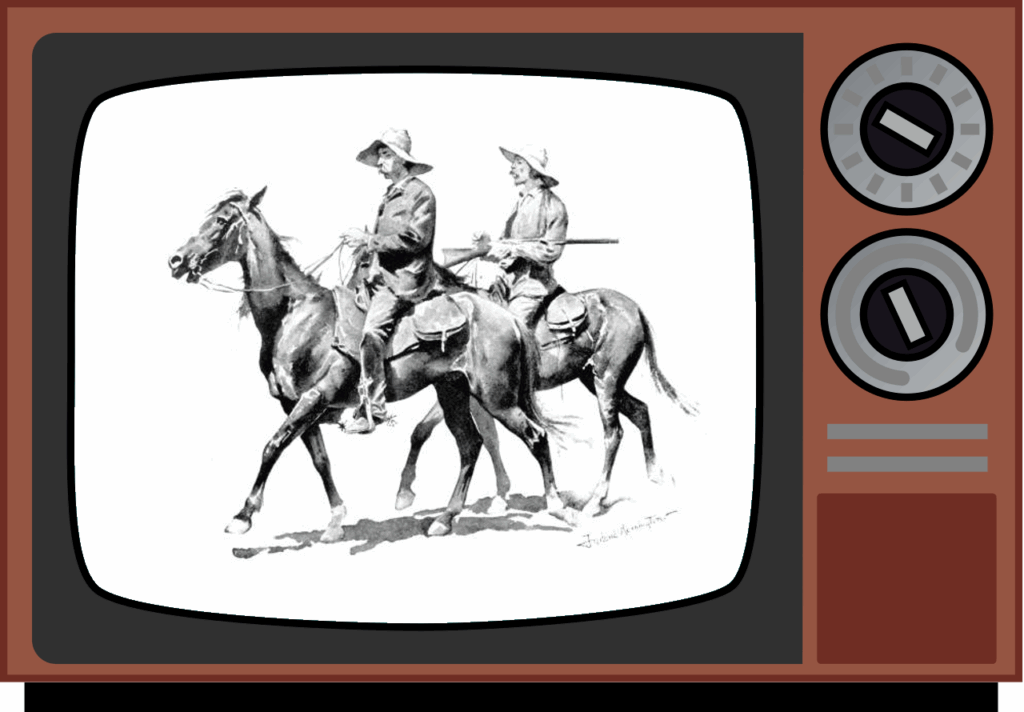
The crackle of saddle leather, the distant call of a lonesome whistle, the resolute stare of a lawman – for a significant stretch of television history, these were the sights and sounds that drew millions to their living rooms. Classic TV Westerns weren’t just a genre; they were a cultural phenomenon, shaping perceptions of heroism, justice, and the untamed frontier. While iconic names like *Gunsmoke*, *Bonanza*, and *Wagon Train* often dominate the conversation, countless other shows and the fascinating stories behind them contributed to this enduring legacy, including beloved series like *Have Gun – Will Travel*.
What went on behind the dusty sets and in the bustling production offices of these legendary shows? From the humble beginnings of future legends to the hidden connections between seemingly disparate series, the world of classic Westerns is a treasure trove of unexpected facts and quirky anecdotes. It’s a realm where casting calls shaped destinies, where producers wrestled with network demands, and where a mere $15,000 could change the course of cinematic history.
So, saddle up and prepare for a journey through the backlots and boardrooms. We’re pulling back the curtain on some truly surprising behind-the-scenes trivia that enriched the golden age of television Westerns, revealing the human drama and creative sparks that fueled their enduring appeal, touching upon everything from the lesser-known connections of *Have Gun – Will Travel* to the dramatic rise of a reluctant superstar on *Rawhide*.

1. Have Gun – Will Travel’s Melody Ranch Connection
When we talk about classic Westerns, we often picture vast, untamed landscapes. But behind every sweeping vista and thrilling shootout was often a very specific, much-used piece of Hollywood real estate. One such legendary location was Melody Ranch in Santa Clarita Valley, California, an unassuming spot that became the backdrop for an incredible number of your favorite frontier tales.
Established way back in 1915, Melody Ranch boasts a truly impressive résumé, serving as a silent witness to decades of cinematic and television history. It’s more than just a set; it’s a living monument to the genre, a place where the dust of countless make-believe cattle drives settled on the same weathered facades. Its legacy is etched into the very fabric of Western entertainment.
Among the illustrious list of television shows that “lensed there” at Melody Ranch, you’ll find an array of familiar titles. Shows like *Gunsmoke*, *The Cisco Kid*, *The Gene Autry Show*, and *The Lone Ranger* all utilized its versatile sets. And, yes, nestled perfectly among these giants, was *Have Gun – Will Travel*, sharing the same hallowed ground.
This shared filming location underscores the tight-knit world of early television production. Actors, crew members, and even specific props would often cycle through these same sets, creating a hidden web of connections between the various Westerns that captivated audiences week after week. It’s a subtle reminder that even the most distinct shows often came from a surprisingly small and interconnected universe.

2. Johnny Crawford’s Early Western Roles
For many fans of *The Rifleman*, Johnny Crawford is indelibly linked with the role of Mark McCain, the earnest young son of Lucas McCain. His performance helped define the show’s unique blend of action and family values, earning him an Emmy nomination for Best Supporting Actor during the series’ run. But before he became the beloved Mark, Crawford was a busy young actor making his way through the bustling landscape of 1950s television.
His journey into the acting world wasn’t without its early bumps, however. In a story that offers a delightful peek behind the curtains of early child stardom, Crawford himself revealed a surprising anecdote from his formative years. He began as an original Mouseketeer, but his tenure with *The Mickey Mouse Club* was surprisingly short-lived.
“I got fired because I couldn’t learn the dance steps fast enough,” Crawford candidly told *The Vancouver Sun* in 1973. While that might sound like a setback, Crawford saw it differently. He immediately recognized the silver lining, adding, “That was my first major break, because being fired freed me to work.” And work he did!
Indeed, his dismissal from the Mouseketeers opened doors to a steady stream of roles across various series television productions, particularly in the booming Western genre. Prior to joining *The Rifleman* at age 12, Crawford had already appeared on several prominent Western shows, including *The Lone Ranger*, *The Sheriff of Cochese*, *Wagon Train*, and, notably, *Have Gun – Will Travel*. His early exposure to the genre across multiple sets undoubtedly sharpened his skills, preparing him for the iconic role that would ultimately define his career.
Read more about: Johnny Crawford: ‘The Rifleman’ Star’s Illustrious Career, Family Bonds – Did He Have Children?
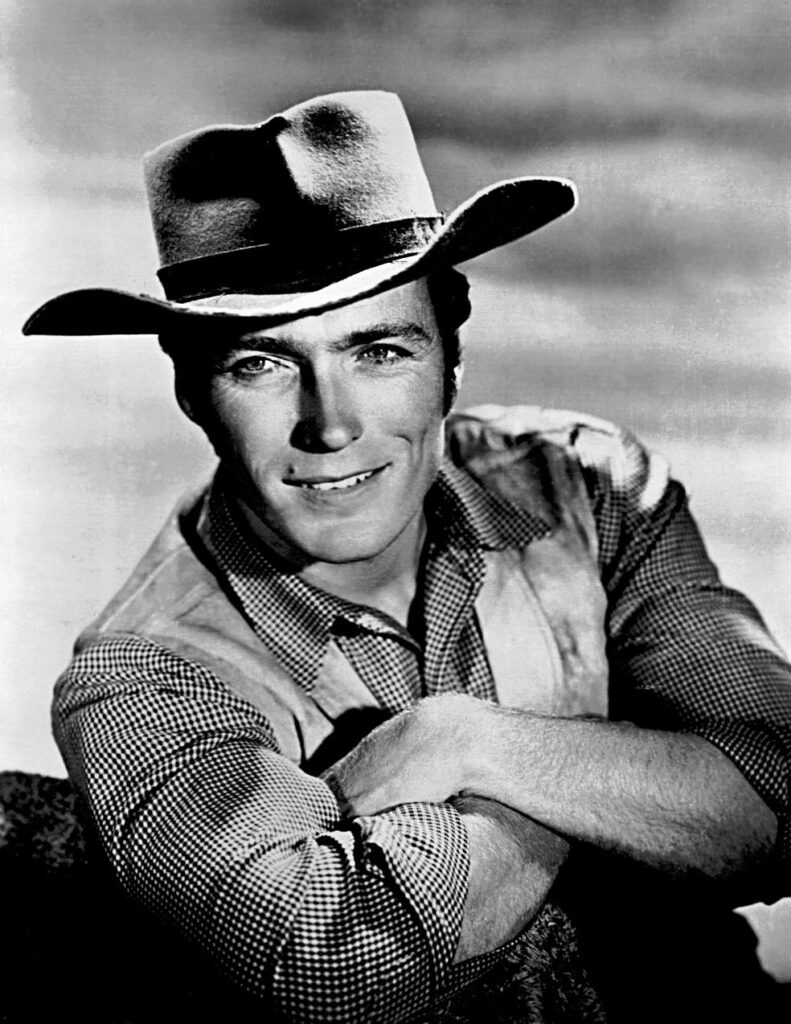
3. Rawhide’s Unconventional Genesis
In an era teeming with cowboys and six-shooters, *Rawhide* managed to carve out a distinct identity, earning accolades as “one of TV’s epic westerns with more of an authentic feel than most others,” according to Boyd Magers of WesternClippings.com. But this celebrated series, which would become a launching pad for a future superstar, almost never made it to air. Its creation story is a testament to perseverance and a clever bit of recycling.
The original brainchild behind *Rawhide* was producer Charles Marquis Warren, a seasoned veteran of the genre who had previously served as writer, director, and producer at the start of *Gunsmoke* in 1955. Warren harbored a compelling idea for a show centered around a rugged cattle drive. However, despite his impressive pedigree and a seemingly solid concept, he initially “could get no network interested.”
Undeterred, but temporarily stalled, “The idea was shelved for three years.” This creative waiting period didn’t mean the concept was completely abandoned, though. Instead, it found a temporary home, serving as the “inspiration for the feature *Cattle Empire* at Fox in ’58, with Joel McCrea.” Interestingly, that film’s cast included several actors who would later become *Rawhide* regulars, such as Paul Brinegar, Charles Gray, Steve Raines, and Rocky Shahan, hinting at the concept’s innate strength.
It seems Warren’s vision was simply ahead of its time for television. When he “pitched the idea of a series to CBS” a second time, after its cinematic detour, the network finally recognized its potential and “accepted” it. This green light set the stage for *Rawhide* to become a beloved, long-running series, demonstrating that sometimes, a great idea just needs the right timing and a little Hollywood persistence to find its moment in the sun.

4. Clint Eastwood: From Sidekick to Star
When *Rawhide* premiered, it was veteran actor Eric Fleming who held the reins as the lead, Gil Favor. But quietly, just outside the immediate spotlight, a “tall lean fellow” was making his presence known. Clint Eastwood was cast in the secondary, yet pivotal, role of Rowdy Yates, a character that would eventually propel him into an entirely different echelon of stardom.
It wasn’t long before the sharp eyes of the production team began to notice something special about this emerging talent. When a “huge shakeup” in the show’s seventh season brought in a new team of writers and producers, the newly arrived associate producer, Del Reisman, vividly recalled the moment of recognition. “We went in there and looked at some film and we all had the same idea at exactly the same time,” Reisman recounted to the Archive of American Television.
That collective realization focused on Eastwood: “The tall lean fellow over there on the edge of the frame has a great way of delivering lines; very droll, very dry. That was Clint Eastwood. And he was the sidekick, he was not the star.” This wasn’t just an observation; it was a revelation that would fundamentally alter the trajectory of the series and, indeed, Eastwood’s career.
The decision was clear: “We thought, ‘We’ve got to build this guy up a little bit.’” The team quickly moved to elevate his character, and by all accounts, the collaboration was smooth and successful. Reisman stated, “we worked very, very comfortably with him, and we turned out the shows,” effectively laying the groundwork for Rowdy Yates to step into a more prominent role and for Eastwood to begin his ascent.

5. The Gary Cooper Resemblance
As Clint Eastwood’s star began to rise on *Rawhide*, the production team wasn’t just impressed by his understated delivery; they also noted a certain cinematic quality about his physical presence. It’s a fascinating peek into the unconscious biases and archetypes that often shape Hollywood casting decisions, especially when looking for the next big Western hero.
Del Reisman, the associate producer who played a key role in boosting Eastwood’s character, candidly admitted that when they first started working with him, they weren’t intimately familiar with the actor. “We didn’t know him,” Reisman revealed, explaining that their perception was largely based on his screen presence and a striking similarity to a legendary figure.
The comparison was to none other than “Gary Cooper, an old Western star.” Cooper, known for his stoic demeanor, lean build, and quintessential American cowboy image, represented the pinnacle of Western heroism. For the *Rawhide* team, seeing shades of Cooper in Eastwood was a significant factor in their decision-making.
This visual echo of a beloved Western icon played a crucial role in the show’s evolving dynamics. Reisman elaborated on their collective thought process: “So, we thought we will move him a little bit more into center stage, which we did.” The subtle nod to a classic archetype helped justify and accelerate Eastwood’s promotion, proving that sometimes, looking the part can be just as important as playing it.
Read more about: The Unforgettable Moments: 11 Stars Who Exploded the Internet with a Single Photo, and the Wild Rides That Followed!
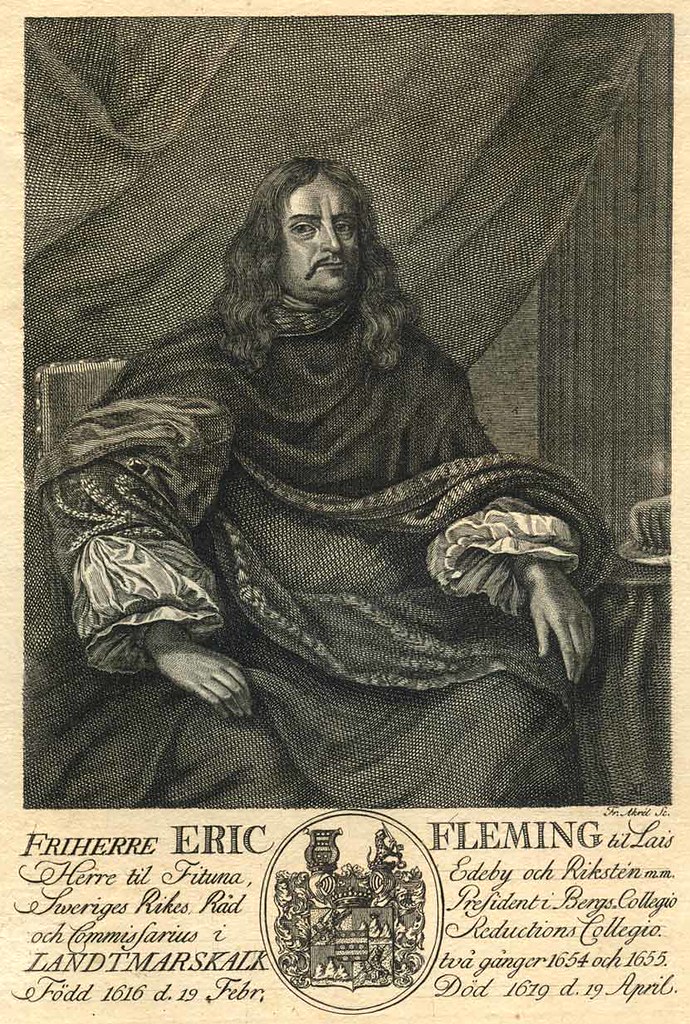
6. Eric Fleming’s Exit and Eastwood’s Reluctant Rise
The creative changes introduced in *Rawhide*’s seventh season, which sought to elevate Clint Eastwood’s character, didn’t exactly go over well with everyone on set. Specifically, the show’s original star, Eric Fleming, who had been hired to lead the cattle drive, found himself increasingly unhappy with the shift in focus. This growing dissatisfaction created considerable tension behind the scenes.
As Reisman detailed, Fleming “became more difficult to work with” as the season progressed. This interpersonal friction, coupled with the production’s new vision for the series, ultimately led to a dramatic and definitive action by the network. CBS made the tough decision to part ways with its original leading man, firing Eric Fleming from the show.
With Fleming’s departure, Clint Eastwood’s character, Rowdy Yates, was thrust unmistakably into the leading role, becoming “the centerpiece” of the series. However, this was a promotion Eastwood himself had mixed feelings about. It turns out that while his career was taking off, he was experiencing a significant amount of professional fatigue.
“And so,” Reisman recalled, “Clint Eastwood as Rowdy Yates was the centerpiece. And then Clint went to CBS and said, ‘You fired the wrong guy. I should have been fired,’ because he was very tired of the show.” This candid confession offers a rare glimpse into the internal struggles of a burgeoning star, revealing that even significant career advancements can come with a heavy dose of weariness and a longing for new horizons.
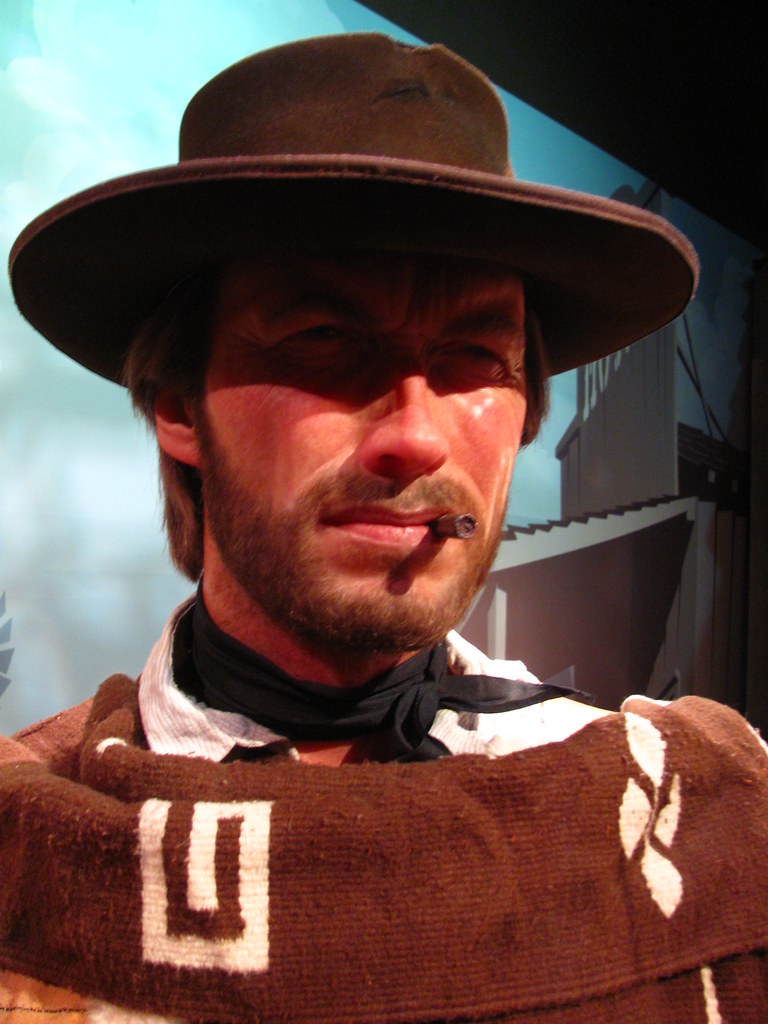
7. The $15,000 Offer that Changed Everything
It’s truly remarkable how a relatively modest sum of money, especially by today’s standards, can trigger a seismic shift in an entire industry. Despite Clint Eastwood’s weariness with *Rawhide* and his private sentiment that he, not Eric Fleming, should have been fired, fate had an entirely different, and frankly historic, plan in store for him. The seeds of his legendary “Man with No Name” persona were about to be sown.
Del Reisman, the associate producer, clearly remembered the moment Eastwood shared news of an intriguing proposition. “Clint told him and another producer that his agent had gotten an offer for him to make a Western to be shot in Spain with an Italian director.” The proposal sounded unusual, perhaps even a bit risky for a TV star.
Eastwood himself expressed some initial uncertainty, telling them, “‘I don’t know about this,’ he said, ‘but they’re going to pay me $15,000,’ which to Clint at that time, to all of us, was quite a bit of money.” This was a significant sum for the period, enough to warrant serious consideration, and the informal discussion among colleagues ultimately led to a life-altering decision.
The ultimate push for Eastwood came from a personal place: “Clint finally said, ‘I think I’m going to take it. My wife has never been to Europe,’ so he went to Europe and made the motion picture *A Fistful of Dollars* (1964), which Sergio Leone directed.” This was the foundational film of the iconic “Man with No Name” trilogy, a move that would redefine the Western genre and cement Eastwood’s status as an international movie star.
Upon its eventual screening, the impact was immediate and undeniable. Reisman mused, “You saw this little puff of cigar smoke, and this guy comes around with the hat on and the look and everything, and you right away said, ‘My God, he’s a Western star!’” Europe had embraced him first, and soon, the rest of the world would follow, all thanks to a timely offer and a desire to see Europe.
Beyond the dusty trails of cattle drives and the early connections of *Have Gun – Will Travel*, the world of classic Westerns is teeming with even more intriguing tales. From the anachronistic details in beloved series to the very real figures who inspired unforgettable characters, and the dramatic comebacks of fan-favorite shows, there’s always another layer to peel back in this fascinating genre. We now venture further, exploring the craft, the occasional controversy, and the lasting cultural impact that cemented these Westerns in television history.
Read more about: From Pennies to Millions: Which Classic TV Stars Are Still Cashing in on Reruns Today?
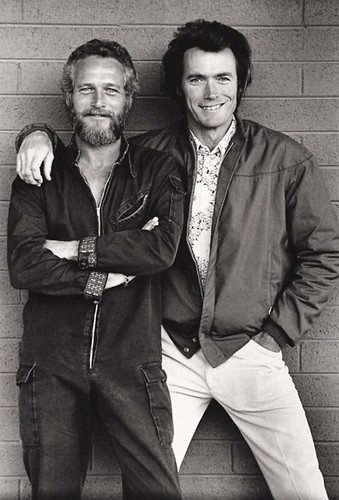
8. From “Idiot of the Plains” to International Icon: Clint Eastwood’s Evolution
It’s a curious twist of fate that the actor who would become synonymous with the laconic, tough-as-nails Western hero once referred to his own character as the “idiot of the plains.” Clint Eastwood’s portrayal of Rowdy Yates on *Rawhide* began as a secondary role, and while he eventually became the centerpiece after Eric Fleming’s departure, Eastwood himself admitted to being “very tired of the show.” His character, too, underwent a transformation, starting as a tenderfoot but evolving into a more fatalistic trail boss by the final season, a shift perhaps influenced by his burgeoning film career.
Despite his weariness, Eastwood acknowledged the immense value of his time on *Rawhide*. He told interviewer Barbara Walters, “Having the security of being in a series week-in and week-out, gives you great flexibility. You can experiment with yourself, try a different scene in different ways. If you make a mistake one week, you can look at it and say, ‘Well, I won’t do that again.’” He emphasized that the show aimed for “honest stories, pretty much the way they happened,” respecting “the historical truth” while occasionally heightening drama. This foundation proved invaluable for his later work.
Indeed, the skills honed on *Rawhide* were just the beginning. While he credited the series as a “great learning experience both in terms of acting and filming techniques,” Eastwood often points to film directors Sergio Leone and Don Siegel as his primary mentors. The late Ted Post, who helmed several *Rawhide* episodes and later some of Eastwood’s feature films, also recalled offering the star “some tips along the way,” advice that undoubtedly contributed to his formidable success.
The path forged from *Rawhide* led to an unparalleled cinematic legacy. After his breakout “Man with No Name” trilogy—*A Fistful of Dollars* (1964), *For a Few Dollars More* (1965), and *The Good, the Bad and the Ugly* (1967), which collectively earned around $54 million globally—Eastwood consistently kept the American Western alive. His Academy Award-winning *Unforgiven*, along with films like *Hang ‘Em High*, cemented his status. Beyond Westerns, he found success in war films such as *The Outlaw Josey Wales* and *Heartbreak Ridge*, and created the iconic “Dirty Harry” series, proving his versatility as both an actor and, eventually, a celebrated director with his debut in *Play Misty for Me* (1971).

9. The Anachronisms of *The Rifleman*
*The Rifleman* carved out a unique space in television Westerns, known for Chuck Connors’ portrayal of Lucas McCain, a widowed father with firm moral values and an impossibly fast Winchester. While the show was praised for its blend of action and family drama, a closer look reveals some fascinating historical inaccuracies—or perhaps, clever creative liberties—that keen-eyed fans have often noted, adding another layer to the show’s charm.
The most famous of these anachronisms centers on McCain’s customized rifle, a hallmark of his character. Although the series was set in 1881, Lucas McCain’s weapon of choice, a 20-inch barrel Winchester, was actually designed by firearm genius John Browning in 1892. Prop provider James S. Stembridge further modified this already futuristic piece, equipping it with a large lever loop and a trigger mechanism that allowed Connors to unleash 12 shots in rapid succession—a signature move that became integral to the show’s identity, regardless of its historical accuracy.
McCain’s wardrobe also sported some unexpected contemporary touches. Observant fans have spotted Lucas wearing Wrangler jeans, complete with the distinctive “W” stitching on the pockets. The catch? Wrangler jeans didn’t make their debut in stores until 1947, a full six decades after the show’s 1881 setting. Not content with just anachronistic denim, McCain also donned a Lee ‘Storm Rider’ jean jacket, a garment that first hit the racks in 1953. These fashion choices, while certainly stylish for the time of filming, offer a humorous glimpse into the relaxed historical adherence of classic TV production.
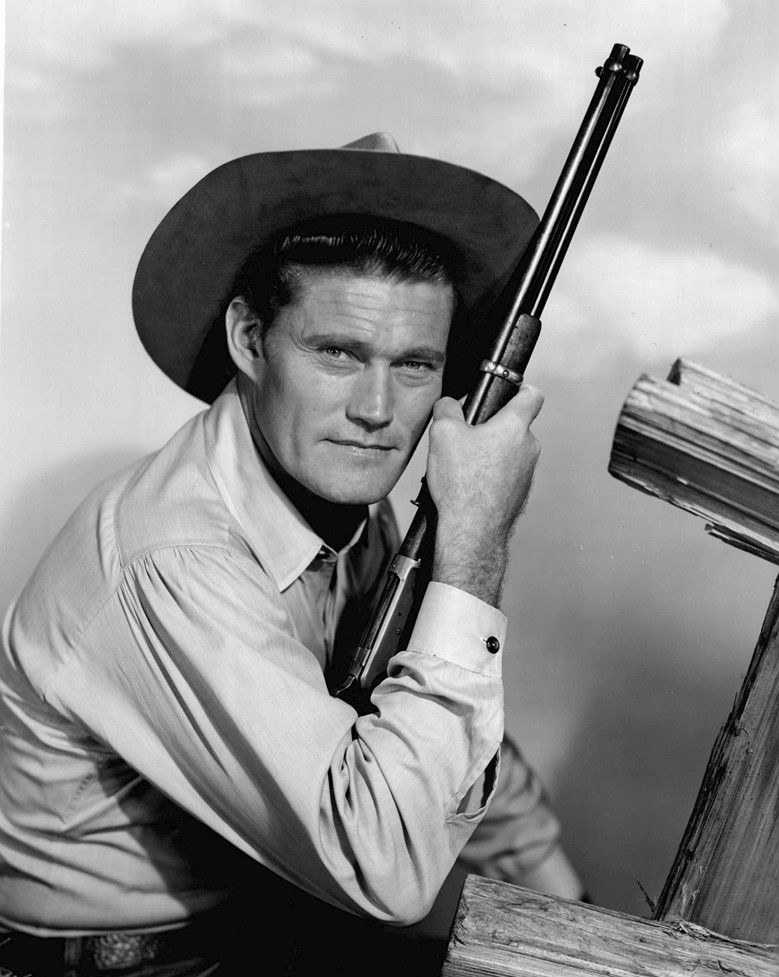
10. Sam Peckinpah’s Untamed Beginnings with *The Rifleman*
Before he became the legendary, and often controversial, director known for his groundbreaking Western films, Sam Peckinpah cut his teeth writing for television. His early career is a fascinating journey that unexpectedly intertwines with the creation of *The Rifleman*, a show that, despite its more family-friendly veneer, bore the early fingerprints of Peckinpah’s distinct vision.
Remarkably, the script that would eventually become *The Rifleman* pilot was initially conceived by Peckinpah for the iconic series *Gunsmoke*, for which he had already penned a dozen episodes. However, circumstances led it to air instead on *Dick Powell’s Zane Grey Theatre*. Soon after, Peckinpah teamed up with *The Detectives* producer Arnold Laven to develop the concept further, transforming it into the gritty Chuck Connors series that would captivate audiences.
Peckinpah’s tenure on *The Rifleman* was, however, short-lived, lasting only a single season. His departure stemmed from creative clashes with the network and producers, who pressured him to tone down the series’ inherent violence. Peckinpah steadfastly maintained that the lessons Lucas McCain imparted to his son accurately reflected the harsh realities of their frontier life. Chuck Connors himself supported Peckinpah’s stance, stating in a 1962 interview, “How can children learn to cope with violence unless they know what it’s all about?” This early conflict foreshadowed Peckinpah’s career-long dedication to unflinching realism, even if it meant parting ways with projects.
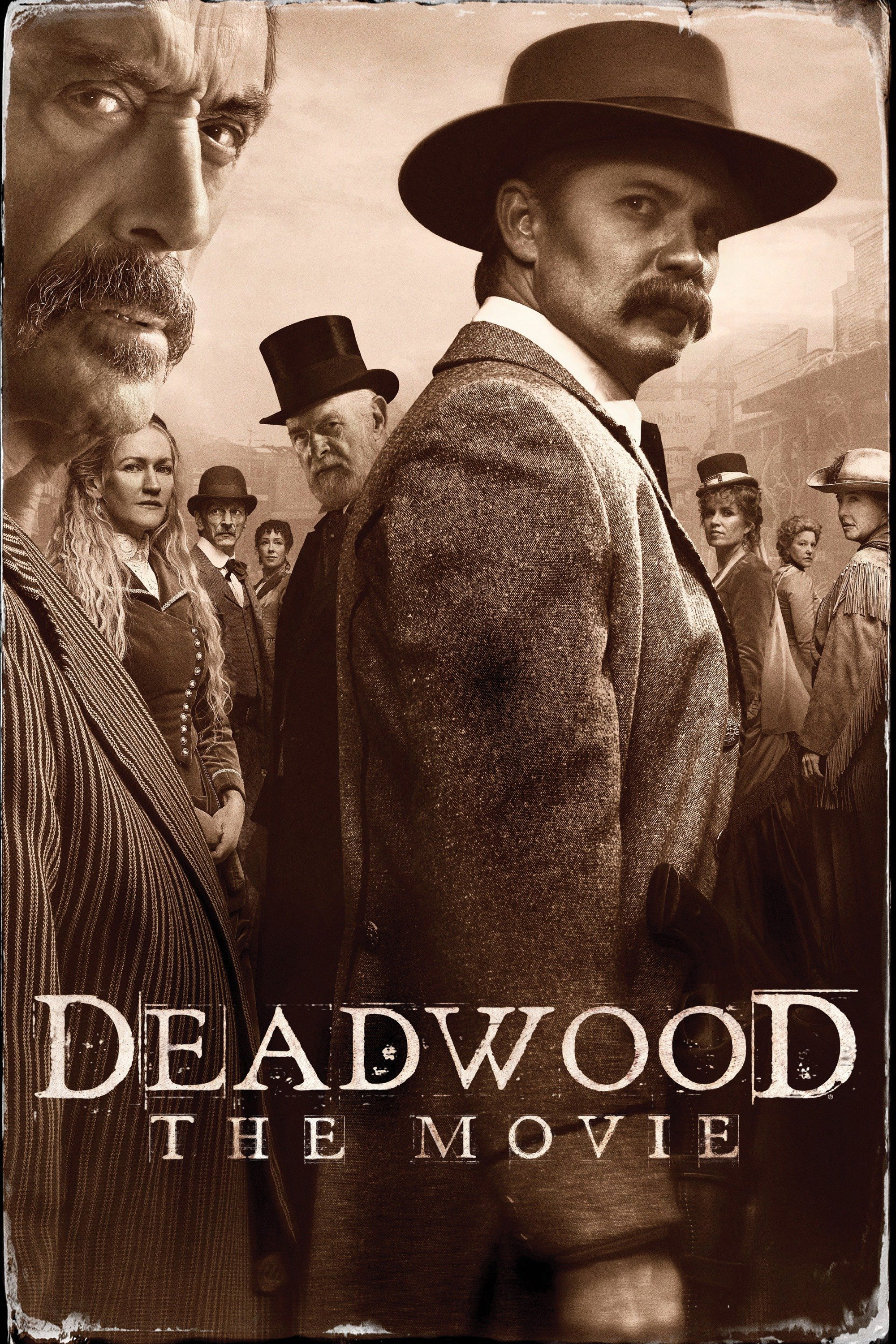
11. *Deadwood*’s Real-Life Characters and Their Gritty Truths
HBO’s *Deadwood* earned widespread critical acclaim for its immersive portrayal of a lawless 1870s South Dakota town, a place teeming with a volatile mix of criminals and ambitious entrepreneurs. Series creator David Milch meticulously grounded the show in history, rigorously researching the real Deadwood through old newspapers, residents’ diaries, and formal historical accounts, aiming for an authentic, albeit dramatic, reflection of the era.
Many of the series’ most compelling figures were, in fact, real people. Seth Bullock, memorably played by Timothy Olyphant, arrived in Deadwood with his friend Sol Star to establish a hardware store. As in the show, he was a key investor in the burgeoning community, headed healthcare boards, and ultimately became the town’s first sheriff, earning a formidable reputation as a “bad man with a gun.” This reputation even endeared him to Theodore Roosevelt, whom Bullock later helped campaign for the presidency, cementing his legend far beyond the Black Hills.
Then there’s Al Swearengen, portrayed with grim complexity by Ian McShane. The show presents him as a pimp, crook, and murderer, yet also a strangely civic-minded protector of the vulnerable Jewel. The historical Swearengen, however, was far less romanticized. He was a notorious sex trafficker, luring women to Deadwood under false pretenses before forcing them into prostitution, and was publicly accused of domestic abuse by his wife. Interestingly, Milch initially believed Ian McShane would be miscast for the role, envisioning a “physically imposing specimen,” but McShane’s “fierce matter-of-factness” ultimately convinced him that the actor embodied Swearengen’s true essence.
Beyond these two central figures, the real Deadwood boasted an array of colorful personalities. Wild Bill Hickok, Calamity Jane, Sol Star, E.B. Farnum, A.W. Merrick, Charlie Utter, and George Hearst were all historical figures with documented roles in the town’s development. Other characters, like Trixie, Whitney Ellsworth, and Alma Garret, while fictional, were carefully crafted archetypes, ensuring the show remained true to the spirit and social fabric of the chaotic frontier settlement.

12. The Colorful (and Coarse) Language of *Deadwood*
One of *Deadwood*’s most distinctive, and often commented upon, features was its famously aggressive and anachronistic use of profanity. Creator David Milch was dedicated to capturing the raw, gruff atmosphere of the Black Hills—a dangerous place where men toiled, fought, and, crucially, cursed with vigor. However, a strict adherence to 1870s slang would have produced dialogue that, to modern ears, might have sounded comically quaint.
To bridge this gap and maintain a visceral authenticity, Milch made a deliberate choice: contemporary cursing’s “heavy hitters” were swapped in for the more historically accurate but less impactful “tarnation” and “goldarn.” This creative decision meant that the f-word, which didn’t truly come into widespread popularity until the 1920s, became a dominant linguistic force on the show, much to the surprise and occasional shock of its audience.
Indeed, dedicated viewers meticulously tracked the verbal onslaught. According to one such tabulation, the entire series clocked in an astonishing 2980 uses of the f-word. While this number is impressive on its own, it translates to an average of 1.56 uses per minute. For comparison, Martin Scorsese’s infamously expletive-laden film *The Wolf of Wall Street*, with its 569 uses, actually wins the “per minute” contest, boasting 3.16.
The show’s coarse language and raw violence even elicited a memorable reaction from a very unexpected source: Timothy Olyphant’s mother. When her son, who played Sheriff Seth Bullock, was first cast, Mrs. Olyphant was delighted he would be in a Western. However, after watching the premiere, she confessed to him, “I told all the ladies at church you were finally gonna be in something they could watch, and now I’ve got to call them all back,” humorously underscoring the show’s impact on unsuspecting viewers.
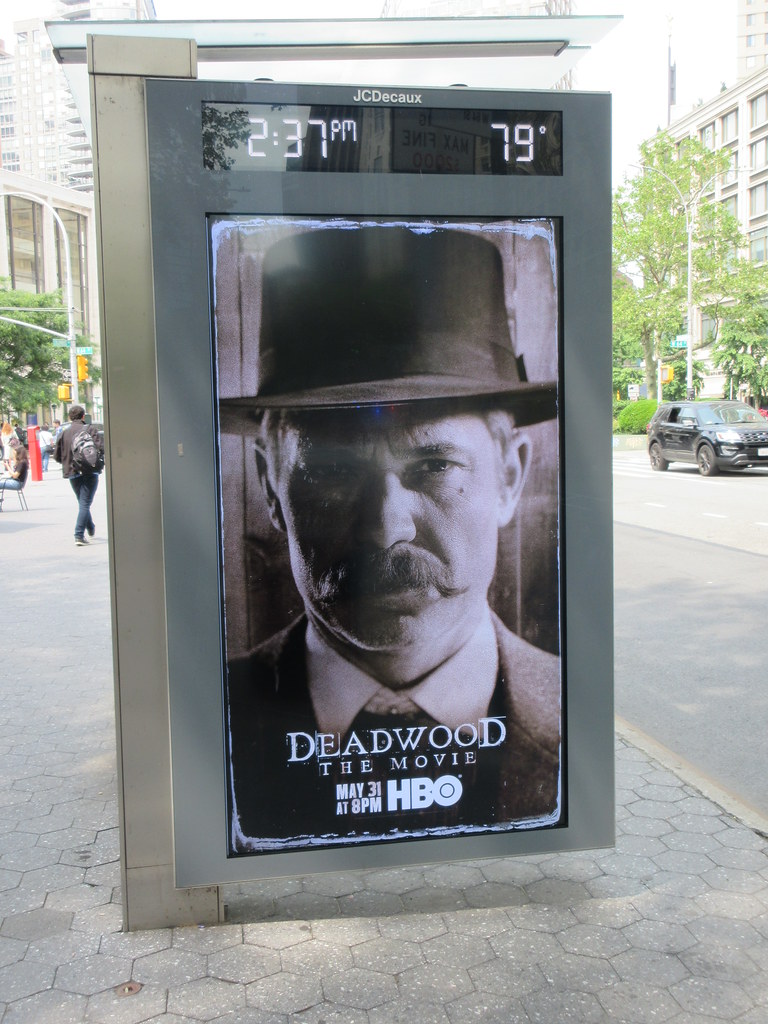
13. Quirky Casting and Behind-the-Scenes Decisions on *Deadwood*
The intricate tapestry of *Deadwood* wasn’t just woven with historical facts and compelling dialogue; it was also shaped by some truly fascinating behind-the-scenes decisions and unexpected turns in casting. From actors playing multiple roles to pivotal scene improvisations, these details offer a glimpse into the creative process that brought the chaotic frontier town to life.
Take, for instance, the versatile Garret Dillahunt, who remarkably played two distinct characters within the series. Initially, Dillahunt auditioned for the roles of Seth Bullock and Doc Cochran before being cast as the crop-eared killer, James McCall. After McCall fled Deadwood in season one, David Milch, determined to keep Dillahunt in the fold, brought him back in season two as the kinky and sadistic geologist Francis Wolcott—a testament to the actor’s talent and Milch’s vision.
A particularly poignant scene involving Paula Malcomson as Trixie is said to have solidified her character’s place in the series. During the “Reconnoitering the Rim” episode, the scene was originally set with Trixie and Al Swearengen in bed. Malcomson, however, suggested the more intimate act of Trixie shaving the calluses off Al’s feet with a straight razor—a detail inspired by her own father doing it for her grandfather. She improvised the line, “Shall I do the other foot?” and Ian McShane’s simple reply, “Please,” reportedly transformed their relationship and, Malcomson believes, ultimately saved Trixie’s life on the show.
Even the series’ iconic opening credits hold a secret. The identity of the “Bella Union Babe” who sensually sinks into a bathtub remained a mystery for a time, but it was later revealed to be Bethalyn Staples, one of 20 actresses cast as background extras. She was called back for second unit shoots after season one, with simple directions: “Simply, sink into the tub as slowly as you can while still making it look natural.” The result was an indelible image, captured with surprising efficiency in a barn with sun-warmed garden hose water.
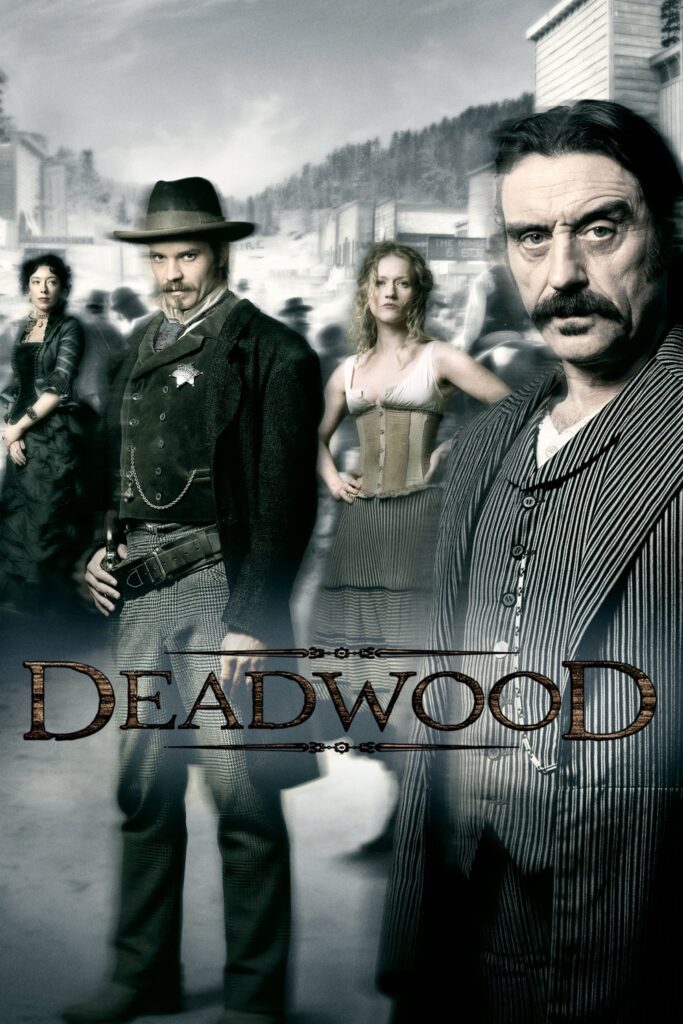
14. *Deadwood*’s Cancellation and Triumphant Return
For many fans, the news of *Deadwood*’s cancellation after its third season in 2006 was nothing short of devastating, leaving numerous story threads unresolved. Speculation often pointed to David Milch’s concurrently greenlit project, *John From Cincinnati*, as the cause. However, Milch himself clarified the situation, revealing that HBO had offered a six-episode order for a fourth season. He famously turned it down, asserting, “For my part, I did not want to accept a short order. We couldn’t have done the work the way we wanted. I didn’t want to limp home. My old man used to say, ‘Never go anyplace where you’re only tolerated.’”
The hope for a proper conclusion dwindled over the years. Ian McShane, the formidable Al Swearengen, declared the prospect “dead” in 2009, a sentiment Milch echoed in 2012, admitting they had gotten “really close about a year ago,” but that it “doesn’t look that way.” The dream of seeing the beloved characters again seemed destined to remain just that—a dream.
But against all odds, the phoenix of Deadwood began to stir from the ashes. By early 2017, reports surfaced that Milch was actively working on a script for a long-awaited movie. These rumors gained solid ground in April of that year when multiple outlets confirmed that the script was complete and had been submitted to HBO. McShane himself buoyantly confirmed the news to TVLine, challenging HBO to “deliver [a finished product],” or else “blame them.”
The collective sigh of relief and exhilaration was palpable when, in 2018, HBO officially confirmed that *Deadwood: The Movie* was a go. The film finally premiered on May 31, 2019, providing a much-craved finale and a fitting send-off for Seth Bullock, Al Swearengen, and the rest of the unforgettable denizens of the Black Hills. It was a testament to the enduring power of a story, proving that some legends, much like the gold that built their towns, can always be unearthed once more.
As we pack away our hats and dust off our boots, it’s clear that the world of classic TV Westerns is far more than just horses, heroes, and villains. It’s a rich tapestry woven with fascinating human stories, creative triumphs, unexpected challenges, and the kind of real-life drama that often rivaled what unfolded on screen. From the humble beginnings of future legends to the meticulous craft behind historical narratives and the perseverance required to bring beloved tales to a proper close, these behind-the-scenes insights truly deepen our appreciation for the enduring legacy of the American frontier on television. They remind us that sometimes, the most intriguing stories are found just beyond the frame.”



